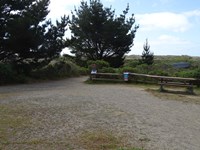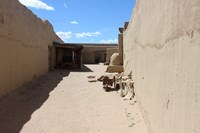- Chesapeake & Ohio Canal National Historical Park (5)
- Kenilworth Park & Aquatic Gardens (5)
- National Capital Parks-East (5)
- Prince William Forest Park (5)
- Antietam National Battlefield (4)
- Catoctin Mountain Park (4)
- George Washington Memorial Parkway (4)
- Harpers Ferry National Historical Park (4)
- Manassas National Battlefield Park (4)
- Show More ...
- Great Lakes Inventory & Monitoring Network (4)
- Chihuahuan Desert Inventory & Monitoring Network (2)
- Gulf Coast Inventory & Monitoring Network (2)
- Inventory and Monitoring Division (2)
- Natural Resource Stewardship and Science Directorate (2)
- Sonoran Desert Inventory & Monitoring Network (2)
- Southern Plains Inventory & Monitoring Network (2)
- Appalachian Highlands Inventory & Monitoring Network (1)
- Arctic Inventory & Monitoring Network (1)
- Show More ...
Showing 57 results for fowlers toad ...
- Type: Article
National parks play a central role in protecting biodiversity. Amphibians—the frogs, toads, and salamanders are some of the most fascinating, sensitive, and threatened species on our planet. A new study shows that national parks are home to some of the most diverse communities of amphibians in the US. Read about amphibian biodiversity hotspots in parks and NPS actions to protect these animals in this article.
- Type: Article
Amphibians are excellent ecological indicators due to high sensitivity to slight changes in their environment. Worldwide declines in amphibian populations prompted the U.S. Geological Survey to begin a national effort to document trends of amphibian populations on federal lands. Research on amphibians in Glacier, particularly boreal toads, began in 2000. Researchers are documenting changes to population size, survival rates, and occupancy of suitable habitat.
Limantour Beach Trailhead
- Type: Place
Leading west and then north from the Limantour Beach Trailhead, the Muddy Hollow Trail offers birders great opportunities to see a variety of water fowl and shorebirds in the Estero de Limantour and along Muddy Hollow Creek. The Muddy Hollow Trails is very flat and easy to walk. The trailhead is located at the west end of Limantour Road, approximately 20 minutes by car from the Bear Valley Visitor Center.
Information Panel: Helen Shaw Fowler
Side Corral
- Type: Article
To steward amphibians effectively, managers need basic information about which species live in parks. But species lists need constant maintenance to remain accurate. Due to recent efforts, the National Park Service now has an up-to-date amphibian species checklist for almost 300 parks. This information can serve as the basis for innumerable conservation efforts across the nation.
- Type: Article
To steward amphibians effectively, managers need basic information about which species live in parks. But species lists need constant maintenance to remain accurate. Due to recent efforts, the National Park Service now has an up-to-date amphibian species checklist for almost 300 parks. This information can serve as the basis for innumerable conservation efforts across the nation.
- Type: Article
Amphibians are a crucial part of both aquatic and land ecosystems, and National Capital Region parks are home to at least 20 different amphibian species. Learn how amphibian populations are changing based on more than fifteen years of NPS monitoring by the National Capital Region Inventory & Monitoring Network.
Rock Creek Amphibian Monitoring 2023
Prince William Amphibian Monitoring 2023
Monocacy Amphibian Monitoring 2023
Manassas Amphibian Monitoring 2023
George Washington Memorial Parkway Amphibian Monitoring 2023
Harpers Ferry Amphibian Monitoring 2023
C&O Canal Amphibian Monitoring 2023
Catoctin Amphibian Monitoring 2023
Antietam Amphibian Monitoring 2023
- Type: Article
The American bullfrog is a great threat to aquatic ecosystems in the Southwest. They are voracious predators of aquatic animals and carry diseases that kill native species. We will implement three main actions in this project funded by the Inflation Reduction Act, Invasive Species Grant: bullfrog control, native species recovery and reintroduction, and development of early detection/rapid response protocols for bullfrogs.



















